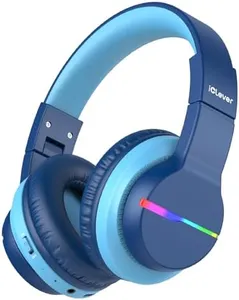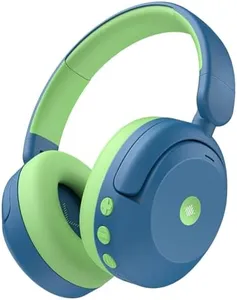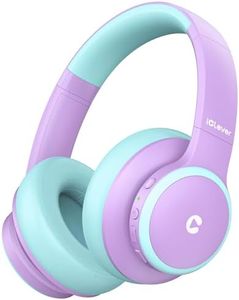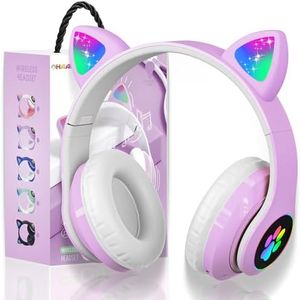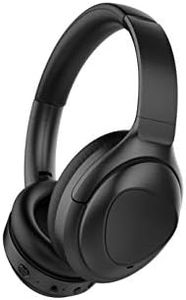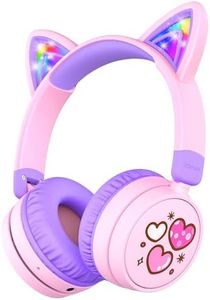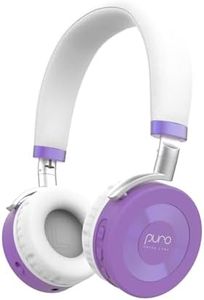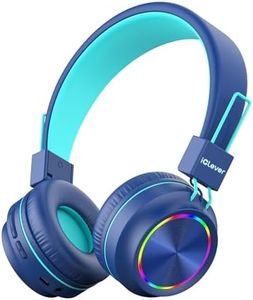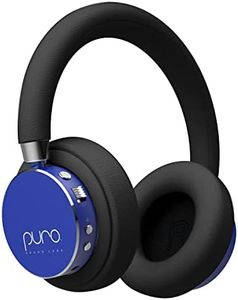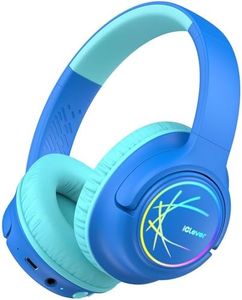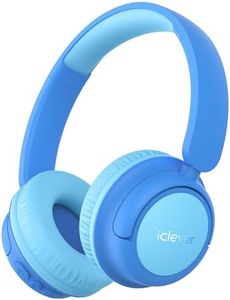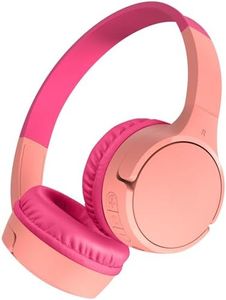We Use CookiesWe use cookies to enhance the security, performance,
functionality and for analytical and promotional activities. By continuing to browse this site you
are agreeing to our privacy policy
10 Best Wireless Headphones For Kids
From leading brands and best sellers available on the web.By clicking on a link to a third party's website, log data is shared with that third party.
Buying Guide for the Best Wireless Headphones For Kids
When shopping for wireless headphones for kids, it's important to prioritize safety, comfort, and ease of use. Kids need headphones that won't damage their hearing, fit their smaller heads comfortably, and are sturdy enough to withstand lots of use. Since kids might use headphones at home, in school, or while traveling, it's also useful to pay attention to features that make their experience easier and more enjoyable. By keeping an eye on key specifications, you can choose headphones that perfectly fit your child's needs and lifestyle.Volume LimitingVolume limiting is a safety feature designed to prevent headphones from reaching sound levels that could harm a child's hearing. This feature typically caps the maximum volume output, usually around 85 decibels, which is considered a safe listening level for kids. When looking at headphones, check for a clear indication of a volume limiter and avoid headphones without this protection. If your child will listen in noisy environments and you need to balance safety and audibility, ensure the limiter has an option to adjust between safe levels.
Fit and ComfortFit and comfort refer to how the headphones sit on your child's head and ears, and how comfortable they are to wear for longer periods. Headphones designed for kids should have adjustable headbands and cushioned ear pads that accommodate smaller head sizes. When comparing products, look for lightweight models with soft padding and flexibility. For kids who wear headphones over long periods, prioritize those with more padding and adjustable sizing to ensure a snug but gentle fit.
Battery LifeBattery life measures how long the headphones will work on a single full charge. Kids may use headphones for school, trips, or leisure, so longer battery life means less frequent charging and more convenience. Battery life can vary, ranging from about 8 hours to over 30 hours. For younger children who use headphones sparingly, shorter battery life may suffice. However, for older kids or those who use headphones throughout the day, opt for longer battery life to avoid constant recharging.
DurabilityDurability refers to how well headphones can withstand daily wear and tear. Kids are often less careful with their belongings, so headphones should be made from strong, flexible materials that won't break easily. Some headphones may also feature tangle-free cables or reinforced joints. For very active kids or those who travel with their headphones in backpacks, prioritize sturdier models with reinforced frames or replaceable parts.
Wireless Range and ConnectivityWireless range is the distance over which the headphones reliably maintain their connection to the paired device. Most headphones use Bluetooth, which usually offers a range of about 10 meters. For kids who tend to move around a room while listening, a good wireless range ensures uninterrupted sound. Also check how easy it is to pair the headphones with different devices, as some kids may need to connect to tablets, computers, or phones.
Size and PortabilitySize and portability describe how easy the headphones are to store and carry. Compact, foldable, or lightweight headphones are easier for kids to pack in backpacks or take to school. If your child travels or needs to carry headphones frequently, look for models that can fold flat or come with a carrying pouch.
Parental ControlsParental controls allow adults to set or lock certain features, like volume limits or usage time. Some advanced headphones or companion apps offer digital management for caregivers who want extra control over their child's listening habits. If you want to actively manage your child's headphone use, choose headphones that support parental controls.


